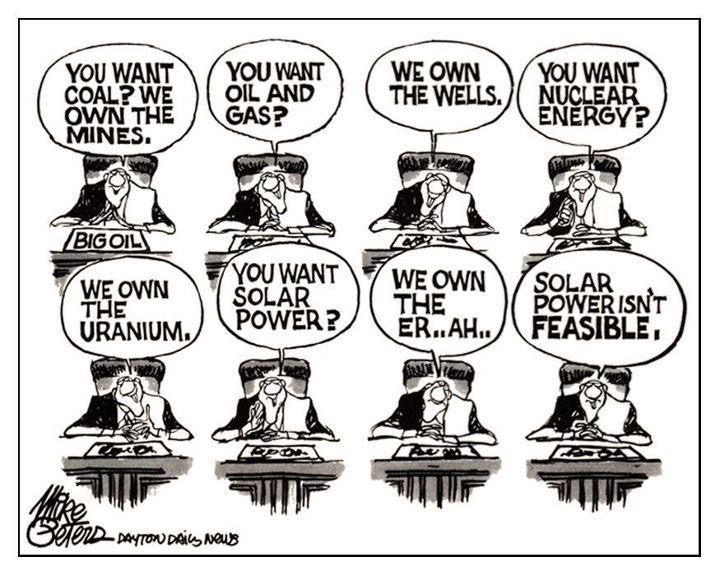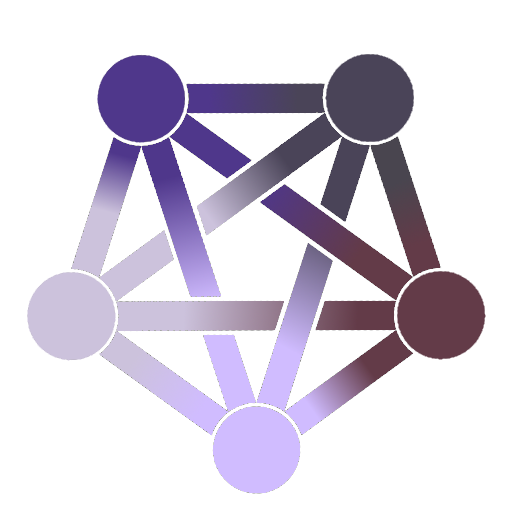- cross-posted to:
- aboringdystopia@lemmy.world
- cross-posted to:
- aboringdystopia@lemmy.world
I saw some context for this, and the short of it is that headline writers want you to hate click on articles.
What the article is actually about is that there’s tons of solar panels now but not enough infrastructure to effectively limit/store/use the power at peak production, and the extra energy in the grid can cause damage. Damage to the extent of people being without power for months.
California had a tax incentive program for solar panels, but not batteries, and because batteries are expensive, they’re in a situation now where so many people put panels on their houses but no batteries to store excess power that they can’t store the power when it surpasses demand, so the state is literally paying companies to run their industrial stoves and stuff just to burn off the excess power to keep the grid from being destroyed.
Lol
I just love when large organizations (governments included) skimp on something for monetary reasons, and get fucked down the line.
Too bad citizens pay the damages.
Wish there was just a faster way to get citizen input.
“Hey folks, this is going to be a cost overrun for this very very good reason, please vote yay or nay in the weekly election”.
Don’t see how it could work now though, given that half the citizens are deeply committed to destroying everything to prove gov doesn’t work.
Batteries are more than likely another type of pollution. I’m sure they can and will be recycled but just like the problem with our current capacity to recycle things it probably becomes untenable (guessing).
The state just needs to find ways to convert that energy into something else. I suggest desalinating sea water and pumping it up stream.
You can’t just say battery. There’s tons of energy storage that isn’t chemical based. Thermal sand batteries, pumping hydro up a hill, flywheel energy storage, etc.
Energy storage doesn’t inherently mean pollution
I can only assume op meant a lithium ion battery. Based on context.
Yeah, the cobalt and lithium is quite nasty to mine
You gotta say what kind of battery when you make a comment like that. A bottle of pressurized gas is a battery. Not very polluting though.
That’s not what I got from the article. (Link for anyone who wants to check it out.)
My interpretation was that decreasing solar/wind electricity prices slows the adoption of renewables, as it becomes increasingly unlikely that you will fully recoup your initial investment over the lifetime of the panel/turbine.
In my mind, this will likely lead to either (a) renewable energy being (nearly) free to use and exclusively state-funded, or (b) state-regulated price fixing of renewable energy.
Just send the electricity to a neighbouring state. Sure, it’ll be really inefficient to pass it through that massive length of cable, but that’s fine, we don’t care about that. If the interstate power infrastructure doesn’t have enough capacity then first priority should be to upgrade it.
That’s one of the options they mention as a solution.
Basically store it, use it, ship it, subsidize it or pay someone to waste it are the options.
Right now they pay someone to waste it, which is the option that makes adoption the most difficult, so it’s a problem.
America is severly lacking in UHVDC.
The peak of power demand is behind the peak of production. So sending power east makes so much sense.
Also, let’s be real here. The Lion battery farms, defeat any sort of environmental benefit. It is a total shot in the foot, which is why governments, and solar companies don’t advertise the concept.
For a moment I was thinking that lion battery is some brand, until it clicked in that you are talking about lithium ion batteries
Sorry, I should have put a dash in :D Li-ion. Also another i.
Rawr!
Actually there is a good amount of credible economic theory which backs the idea that localized post-scarcity markets do cause capitalist influences to wither away, and that power generation is a big fucking domino in that equation. The simple version is that maintenance of artificial scarcity is modeled as capital overhead, so there will always be an inflection point where that overhead actually exceeds the value of all other inputs. The same way eg, marketing cannot create infinite or arbitrary demand.
The other angle here is how there is often incentive for alternative commodification of abundance, which in turn incentives that abundance. This is another common model for various forms of post-scarcity capitalism. Take a YouTube video for example. The commodification of content takes the form of advertising, which effectively transfers the scarcity of one market onto another. Content is basically infinite compared to viewership time inputs. The key here is that there will always exist some forms of scarcity - and time is the big one. Art, company, leisure, physical space, etc. the model here is that eventually something like energy and physical resources might be completely abundant and effectively free, but enabled by competition over attention or leisure or aesthetic experience. You can make a strong argument that this is already happening in the post-industrial world to some degree.
The final issue is that this equation isn’t unique to capitalism. Socialism mediates scarcity in more or less the same way - by transferring and meditating it across various markets using labor as the quanta of scarcity instead of capital. Indeed, many economists will argue that regulated, democratic, liberal forms of capitalism theoretically reduces to the same core basis, since “free [as in speech] labor” itself both creates the market regulation as well as provides the consumption which mediates access to capital. This is, in fact, the core thesis of “third way” market socialism, though it is obviously contentious among orthodox Marxists.
I think the best nation-states, in terms of happiness index, practice “third-way” market socialism or as close of an approximation as they can to it in all but name. I would even include the United States during the post-WW2 economic expansion.
The nordic countries, which tend to score higher on “Happiness Indexes,” are Social Democracies. Social Democracy is a form of revisionist Marxism that believes Capitalism can be wielded for the benefit of all, not just the bourgeoisie.
Unfortunately, these same Nordic countries have been seeing a sliding of the Social Safety Net, similar to what has happened to America following the New Deal (though not nearly as bad yet). Additionally, Imperialism is still the dominant method by which these countries subsidize their safety nets, alongside a dependence on NATO.
21st century Nordic imperialism and ‘dependence’ on a defensive alliance that has only ever been invoked once. Top shelf brainrot.
Yes, economic imperialism based on unequal exchange and dependence on a larger military coalition as a safeguard.
Time for humanity, united, to expand its imperialism towards the stars! That way, filthy xenos subsidize everything instead of our own brethren
US post-WW2 was almost a functioning social democracy, but not market socialism. Market socialism would be something more along the lines of the Labour-dominated era of Israel, or Socialist Yugoslavia.
Yup. The US model is occasionally referred to as “pension fund socialism” (sometimes sarcastically) in the sense that there is a welfare system which resembles a social dividend for the less fortunate, social security which resembles a social dividend for the elderly, and privileged IRA accounts, which resembles collective ownership of capital for the working class. The collective value of US IRA accounts is actually something like 20% of nominal GDP, and social security is like another 10% of GDP. Depending on how you measure it, this makes the actual collective share of the US economy proportionally larger than it was under the USSR or modern day China.
The big thing the US is missing is a healthcare dividend. Also, the welfare layer is arguably much too small, which creates much worse wealth disparity than need be. Still, this is arguably an issue of buttons and knobs rather than the structural issue many make it out to be.
This is a real problem but you can only have so many words in a tweet. Note that the price isn’t zero but instead negative. It means there is literally too much power in the grid and it would need to be used. If a grid has too much power then it is bad. It can damage it. There are things we can build that essentially amount to batteries (or natural variants like a dam) that get charged during times of higher supply than demand and discharged during times of higher demand than supply.
I get the sentiment in here, but the poster is missing an important point: there is a reason some group of lunatics (called the TSO or Transport System Operator or in some cases other power producers) are willing to pay for people to consume electricity when there is too much of it; They are not doing it for the sake of being lunatics, the electrical system cannot handle over or underproduction. Perfectly balanced (as all things should be) is the only way the grid can exist.
The production capacity in the grid needs to be as big as peak demand. The challenge we face with most renewables is that their production is fickly. For a true solarpunk future, the demand side needs to be flexible and there need to be energy storages to balance the production (and still, in cold and dark environments other solutions are needed).
In off-grid, local usages we usually see this happen naturally. We conserve power on cloudy low-wind days to make sure we have enough to run during the night (demand side flexibility) and almost everyone has a suitably sized battery to last the night. The price variability is one (flawed) mechanism to make this happen on a grid or bidding zone level.
Solar panels already turn off when grid voltage is too high
Thank you, it’s very valuable to correct that misinformation.
It seems like an easy mistake to make as the original post being replied to is framing it explicitly in terms of economics.
It’s just a bit of shitshow of weird communication. How hard would a tweet like “A problem with solar panels is that they produce too much electricity during the middle of the day, putting strain on the grid and requiring increased power consumption”.
That’s not as sensationalist but I’m also not a headline writer. It just seems like this shitty piece of journalistic malpractice was made to stir up outrage
https://www.technologyreview.com/2021/07/14/1028461/solar-value-deflation-california-climate-change/
It’s MIT, they’re not exactly a clickbait source.
The reply is what makes the excerpt seem inflammatory. It’s an article about the economics of solar power, so the excerpt is a fair representation of both the article and the real issue it’s discussing.
It would be sensationalist if they said “critical problem paying for solar power comes from negative prices, threatening future of solar adoption”
Framing it as though it were a condemnation of solar turns a statement of fact into something different than what it is.
All this time I thought that MIT meant Massive Idiot Team
This has me thinking
The resurgance of sand batteries has been interesting. While not great for converting back into electricity, it’s great for heating and cooling which is a massive portion of our energy consumption. They can also store quite a ton of energy with crazy efficiency, especially when paired with heat pumps. And from what I’ve been able to deduce, they aren’t dependent on beach sand and can use rougher or man-made sand reliably.
First if we could get enough large buildings and neighborhood/home installation sand battery heating & cooling infrastructure operating with heat pumps. Then when during high times of energy production we can dump the energy into the sand battery infra and help keep the grid stablizied and keeping our heat & cooling overall percentage of use down.
In the end, we’re going to need tons of solutions and strategies for storing excess production during low demand times. I’m hopeful to see where we go here, the crazy things were seeing in energy storage is extremely interesting. I’m super excited to see the advances were seeing in calcium and sulfur based batteries expand in adoption and the production lines can scale with demand.
I’ve been really curious about the possibility of a small DIY sand battery type system. I currently store my “negative value” midday solar power by dumping it into a water tank and using it to feed my hydronic heating system.
However as we know that results in a tank containing useless low-grade heat on a cloudy day, where a sand battery would result in a small amount of usable high-grade heat.
The cooling equivalent could actually be implemented fairly easily at home with common consumer ice machines (which are effectively heat pumps). Make ice when there’s surplus, dump it in an insulated hopper with a heat exchanger for night-time cooling, recycle the near-freezing melt water to make ice the next day. Water is a lot easier to handle because it can be pumped instead of conveyed, and you get the advantage of phase change storage.
I have been running the numbers on one myself and it seems to me the best case would be to actually have one inside my home, since the waste heat will also end up heating the space. I admit it is similar to just having a lot of thermal mass in the house.
That’s really interesting you’re storing power. Was it diy??
Entire system is home built and programmed except the inverter which was a surplus rack-mount.
The dump load in the water tank tracks the battery bank voltage, drawing more power as the voltage rises into the float range. This is used to sense available surplus power, which is used to turn on other dump loads, i.e. air conditioning in summer.
I have a couple window units that are cranked to max cooling and come on in sequence as the surplus power rises, on an early summer day with clear skies it can get to the point of needing a sweater in the house :D I’m migrating to a homebuilt multi-stage heat pump this year after the prototype worked quite well last year.
Also seriously considering the ice storage concept for hot nights, though I might need to make an actual ton of ice!
Just made a deal on 8 massive surplus AGM batteries too to refresh my bank
Fucking amazing😮😮 Write a blog if you document things… Might come handy to beginners
Yes, also it doesnt technically have to be sand, there are concrete mixes and even just bedrock that can be used for similar purposes. I’ve been looking at sand batteries myself for this reason: run the battery hot when power is cheap, let it cool when not.
This sort of thing is of course why it’s useful to have a market mechanism for energy, it can encourage us to build environmentally friendly solutions.
Actually a modern “sand battery” does have to be sand or at least a granular material. The difference between a sand battery and thermal mass is that you use a conveyor to superheat small fractions of the sand, allowing the isolation of high grade heat.
If you have a single kWh to store and 1 ton of sand to work with, you could heat 1kg of sand to hundreds of degrees (sand battery), or 1 ton of sand by one degree (thermal mass).
1 ton of slightly warm sand is useless, while you can extract the high grade heat from the 1kg and get your 1 kWh back.
Interesting, thanks for sharing that!
That is of course absolutely true. But fossil fuels are still a tool of power that is used for political purposes. Of course, this also applies to the metals needed for batteries, for example. However, access to this is not so promising in terms of power, because on the one hand, as you say, you can also live and produce “according to the times of day”. On the other hand, there are untapped reserves of these raw materials - such as cobalt and manganese - in the deep sea, i.e. international waters. In short, I do think that some players have an interest in boycotting solar energy and other renewable energy sources in favor of fossil fuels in order to maintain their power base - Russia, for example.
Could they not just install a series of big “resistors” that can be switched on and off to burn off overproduction when necessary?
They can, and they do. They’re typically considered safety devices since they can be damaged by having excess load dumped on them, and they either are dumb, in which case they don’t act like an actual load the generator is expecting and can maybe cause damage to the generator, or they’re smart and can mimic the type of load the grid would actually give, but now they’re expensive and need maintenance and testing in excess of what the dumb one needs.
It’s something you would need for off grid solar as well, with batteries that can only take so much charge, but at the power grid level it’s a much bigger task because you’re in the realm of “metal explodes” power, and exploding metal is bad.
i feel like you wouldn’t need a dump load for solar, due to how it’s setup. At best you just dont do anything, and worst you disconnect the panels entirely, that could be bad for the panels though idk.
It’s different with typical generation because it’s almost always converting mechanical energy into electrical energy. Which means if you load dump, suddenly the RPM of the turbine driving the generator, and likewise, the generator, is going to vastly speed up. Which given the fundamental mechanics of how those work, is going to fuck shit up. Dump loads exist as a really easy solution there.
But with solid state generation, i’m not sure it would really matter. Unless you’re running a decentralized grid maybe.
The panels still generate power even if they’re disconnected as long as they’re in the sun.
In a home setup they’ll probably just get warm, but if you’re making a lot of current you’d want it to not do that.I think a lot of home setups will switch to a water heater, since that’s easy and also a potentially useful way to spend extra power.
I did some googling to try to get an idea of what happens if you just quickly disconnect a solar cell, and things seemed to indicate that it’s the inverter that switches the DC to AC that likes it the least.
Regardless of the specific reason, I’m quite confident you need something in the mix to eat the excess power from an underutilized solar plant, because otherwise the electrical engineers who built them probably would have taken the seemingly obvious and easy way. :)
solar panels are typically pretty warm already. There are even panels that allow you to push water through them to keep them cool.
I wonder if that would be more effective than dumping resistive heating into water. I suppose it could still be bad for the panel, i would assume panel manufacturers would have data on this, but im too lazy to look it up because whatever site they have is probably a shitfest that i wouldn’t be able to navigate easily.
Yeah, when I looked them up they recommended a dump load to mitigate fire risk, since however hot they get normally is the baseline for when all the energy they produce gets turned into heat on the panel as well.
Gotta send extra power somewhere, and better to send it someplace built for it than into the expensive thing that’s not.
yeah that checks out i suppose. One of these days i will get around to looking into it out of curiosity.
Those still have to be connected to the grid. be maintained, cooled, controlled, all of which costs money.
Okay? So does the entire rest of the grid.
The point is that those have a cost, so grid has to pay for them, essentially. Hence negative electricity prices.
Am I the only one noticing a lot of conservative economic priests in here? Is this normal?
Both of the statements in that screenshot are just so inane.
Frequency has to be maintained on the grid. It’s the sole place where we have to match production and consumption EXACTLY. If there’s no battery or pumped storage storage available to store excess energy, the grid operators have to issue charges to the producers, in line with their contracts, to stop them dumping more onto the grid (increasing the frequency). The producers then start paying others to absorb this energy, often on the interconnectors.
It’s a marketplace that works (but is under HEAVY strain because there’s so much intermittent production coming online). When was the last time you had a device burning out because the frequency was too high?
Turning the electricity grid into some kind of allegory about post-scarcity and the ills of capitalism (when in fact it’s a free market that keeps the grid operating well) is just “I is very smart” from some kid sitting in mom and dads basement.
Additionally, this has been a known issue for decades. If only there had been investment in handling it…
Frequency has to be maintained, and it is trivial to do so when you have excess renewables because inverters are instantly throttle-able. The reason why you’ve never heard about devices failing because frequency is too high is because it is and has always been such a non issue to shutter unneeded generating capacity.
Typically with fossil fuel plants, when the price drops below the cost of fuel for the least efficient plants they drop offline because they are no longer making a profit on fuel and the price holds. Because renewables have upfront cost to build but are free to run on a day to day basis, when there are a lot of renewables the price signal has to drop all the way to nothing before it is no longer profitable to run them.
All this means that all that happened was that for a few hours, solar production was actually enough to satisfy demand for that region. Along term, if low wholesale prices can be counted on midday then people will build industry, storage, or HVDC transfer capacity to take advantage of it.
If these prices are sustained for enough of the day that it is no longer profitable to add more solar farms, then they will stop being built in that area in favor of was to generate power at night such as wind, hydro, and pumped hydro while the panels will instead go to places that still don’t have enough solar to meet demand.
Also as an aside, the wholesale electricity market in north america is by definition about as far from a free market as it is possible for a free market to be without having exact outside price controls. It is a market built solely out of regulation that only exists at all because the government forced it to exist by making it illegal to not use it, either by making contracts off market or by transmission companies in-houseing production, or use it in any way other than as precisely prescribed by the government.
Now we can argue whether or not the wholesale electricity market is well or poorly set up or even if it should exist in the first place, but I don’t think that anyone can argue that it is a free market. At least not without defining the term free market so broad that even most of the markets in the USSR qualify as free markets.
Also, free markets and capitalism are very distinct concepts with no real relation between each other. You might argue that free markets tend to lead towards a capitalist system, but given free markets existed thousands of years before capitalism was invented I don’t think many people would say it was a very strong relationship.
Isn’t there any kind of economic activity that could make use of this excess energy, even if it isn’t very profitable?
Yes. Desalination or hydrogen separation via electrolysis
Both uses are productive, one generates fresh water, the other can be a form of energy storage.
Both are extremely energy intensive for the yield, making them unprofitable, but are extremely useful things to do with a glut of electricity.
Yes there is. So consumers (with the right kind of smart meters) are paid to use energy and we are slowly moving from pilot plan into small scale production of hydrogen. But there’s nowhere near enough and the grid will literally fry itself unless producers stop pumping more onto the grid (during windy and sunny days, in areas with high penetration of intermittent production.
You can pump water uphill back into reservoirs so that you can use it to generate hydro-electricity later https://en.wikipedia.org/wiki/Ffestiniog_Power_Station
Your explanation works very well, but completely falls apart in the last paragraph.
Solar power production clearly is (at least in part) a post-scarsity scenario, given we literally have too much power on the grid.
Furthermore, calling the power market anything like “free” is just plain wrong. A liberal approach to market regulation here would have led to disaster a long time ago, for the reasons you described at the beginning of your comment.
The market “works” because of, not inspite of regulation.
And negative prices are a good thing for consumers, not market failure.
But too much power on the grid isn’t “here, have at it”. It’s fried devices and spontaneous fires breaking out. The grid can’t “hold the power”, only pumped and battery storage can, of which we have nowhere near enough. The grid literally cannot work if other producers put more electricity on to it.
If you have smart meter, you can literally be paid to use power at that point.
I think we’re quite a long way off from “too much power on the grid”, no? Even in America we regularly over-strain our grids. My power provider has even started discouraging folks from using their power as much, and charging more, because they simply decided not to do this work of increasing the amount generated. Like my bill has never once gone down, this paying people to use power concept is completely unheard of in practice.
That said I’m willing to be wrong. If you can show me evidence we have “too much power” I’d be happy to take that to my elected officials, insist I should get paid to heat up my noodles or whatever.
We don’t have too much power overall, but there are moments where solar and renewable production in a region exceeds usage in that region.
wait until you figure out how we solve this problem…
wait for it…
You just don’t produce that energy.
lol. Yes, it’s that simple.
that’s how we’ve been doing it for the past 2 centuries, it’ll be how we continue to do it for the next 2 centuries.
There’s no post scarcity. The power available on the grid must always equal the power consumed. Or all the hell will break loose.
That’s wrong and it’s simple to explain why.
If the grid allows negative prices, grid storage becomes a profitable business opportunity.
The power consumption will always go up or production will go down if prices go negative.
We are missing a key piece of the puzzle to decarbonise the grid and that’s storage of the abundant renewable power we could easily create.
This is a sign the market is ready for investment in storage.
The person you’re responding to is talking about physics, not economics.
There’s no point about talking about the physics of the grid without the economics.
The story of the New York blackouts is not one of groundbreaking physics.
It’s the story of two lightning strikes, some very basic physics, and a systemic failure.
Understanding the systemic failure is not a physics question. Electricity is already well understood and that physics isn’t changing.
A renewable grid is not a physics question either. It’s one of regulation, redundancies and the end goal hasn’t changed.
Saying “production and consumption on the grid must match” might as well be put in the pile with statements like “wires must be made of conductive material”. They’re just 2 things that haven’t changed.
They’re mixing the two to attempt to make a point. “Post-scarcity” is an economic concept, and I’ve never heard that term used in physics.
It’s two separate statements. We don’t live in a post scarcity world. Power grids have physical limitations regarding power in and power out.
Ah then it’s just two non sequiturs that don’t relate to each other
ah yes the physics concept of “post scarcity”
Power plant operators are known to have dreaded this inevitability. There will be no more electrons.
If the grid allows negative prices, grid storage becomes a profitable business opportunity.
in fact, if the price of electricity on the grid changes at all. Storage becomes a point where money can be made.
Question: Who do you think is paying these “negative prices”. Spoiler: It’s the TSOs. They can’t do that for long, or simply go bankrupt.
Yes, “storage of the abundant renewable power” is a key piece of the puzzle, but “The power available on the grid must always equal the power consumed” is something that can not be broken. If it does, equipment will break, people will be without power, and it’ll cost the TSO tons of money to repair.
There’s post scarcity, but only during a short time of the day, when power consumption is relatively lower (it spikes when people come home, because everyone turns their lights and machines on around the same time).
Oh, and I don’t know about the USA, but the Dutch grid is pretty much overloaded, so there is no space to move the power to the storage units (whether the storage exists or not doesn’t matter ATM). We’re working on it, but here’s we’re kinda fucked ATM.
Bankruptcy is seen as a bad thing. In reality it’s the part of market forces everyone has forgotten is important.
If something we need becomes unstable in the market, the government has to provide it and usually does on a break even basis.
Base load electricity will likely have this future.
A liberal approach to market regulation here would have led to disaster a long time ago, for the reasons you described at the beginning of your comment. The market “works” because of, not inspite of regulation. And negative prices are a good thing for consumers, not market failure.
Regulation of a market by the government is liberal politics. A laize faire approach is conservative lol.
Neo liberalism is the core ideology of modern conservatism. For example, both the republican and democrat parties in the United States adhere to Neo Liberal ideology. They are both conservative.
Neo liberalism is the ideology of deregulated capitalism. Neo liberalism holds that everything should be marketable without government interference, including healthcare, real estate, power generation, water, etc. Pioneered by Margaret Thatcher and Ronald Reagan, it is the dominant political ideology across Western democracies. Liberals and Conservatives are both adherents of Neo Liberal capitalist ideology. Leftists are those who support regulation, they are definitionally anti-capitalist. When people refer to the democrat party as socialist or democrats as Leftists, they’re just misusing those terms. Democrats are Neo liberal conservatives who, by and large, support deregulated capitalism.
Okay, and?? None of that goes against what I said. In the scope of us politics, Deregulation of markets in the US is Republican platform. Regulation of markets is Democrat platform. Democrats in the US are more liberal than Republicans even though, as you said, they are far from real leftists.
Their platform at times advocates regulation, but they don’t do much in the way of it. They are largely still in favor less regulation. We have had Democrat presidents since Reagan, quite a few actually and despite that unilaterally regulation had decreased pretty constantly over that time period.
Somehow internet populists have become convinced that liberalism = the government never does anything. Ask literally any economist and they will tell you government intervention and regulation are needed in many things.
For example, read this study on the policy views of practicing economists: https://econfaculty.gmu.edu/klein/PdfPapers/KS_PublCh06.pdf
You will find that most economists strongly support things like environmental, food and drug safety, and occupational safety regulations.
Convincing people liberalism is an evil capitalist ploy to deregulate at all costs is a conservative psyop, and judging from comments like the one to which you’re responding, it’s working.
Somehow internet populists have become convinced that liberalism = the government never does anything. Ask literally any economist and they will tell you government intervention and regulation are needed in many things.
ah yes, the classic laissez faire interpretation of libertarian.
Usually too low frequency is issue, I can’t imagine why even double frequency can damage PSU.
There’s a reason why the frequency is exactly 50hz or 60hz, and it’s not “at least 50hz or 60hz”. You can’t just have 55hz on the grid, you’ll destroy half a country.
That’s why I say low frequency is problem, but high is not as much.
some clocks are bound to grid frequency. It’s the easiest most accessible way to clock time semi accurately.
I don’t think you said why?
It’s not just about frequency - though that is important for devices that synchronize using the grid. When your frequency is going up because of too much power so will voltage. Think about that for a minute.
Not necessarily(see field windings), but higher voltage is indeed a problem
Not everything on the grid is a motor. Even if it was you would still need to rebuild the motor to change field windings.
Ok, your particular device may handle a wide band of frequencies. Congrats.
But do we agree that not all devices can? What about sensitive devices keeping patients alive in hospitals?
Those would not be plugged straight into the grid but with a power conditioner inbetween
Oh ok, I guess frequency maintenance on the grid isn’t a problem then and all the pumped storage and battery installations can shut and all the grid planners can go home and the spots markets can close and we can just dump as current as we see fit onto the grid and you’re right and I’m wrong.
All of that matters, but I think the parent post was only calling out the hospital equipment as a bad example. Like how your keyboard and your SSD don’t care what the grid is doing as long as the PSU can handle it.
But back to maintaining the frequency on the grid, along with keeping it within tolerance don’t they also have to make sure that the average frequency over time is VERY close to the target? I believe there are devices that use the frequency for timekeeping as well, like some old plug-in alarm clocks.
Fair enough. I was getting frustrated because I was trying to make a larger point about the fact that the grid can’t endlessly handle production. At some point the grid has to say “it will cost you to dump this onto the grid”. And suddenly I found myself discussing PSUs. I mean, yes, I’m aware there’s equipment on the grid that can handle different frequencies better than others but I felt we were discussing the bark of a single tree when I was trying to talk about the forest.
Also fair enough!
It really is a good point you make though. There’s a large balancing act to produce the right amount of power at exactly the time it’s needed. I think in our daily lives, and especially for non-tech/STEM folks, electricity is just taken for granted as always available and unlimited on an individual scale. I think people don’t envision giant spinning turbines when they plug something in, just like they don’t think of racks of computers in a data center when they open Amazon or Facebook.
Maybe it will be less like that in a couple decades when there is distributed energy storage all over the grid, including individual homes & vehicles.
lol If you think hospitals don’t have managed power systems you shouldn’t be contributing.
Also lol if you think medical equipment isn’t required to be robust, have you ever read a supply tender spec for a hospital?
But do we agree that not all devices can?
By not all you mean motors with windings connected to grid? Well, they still will work on higher frequencies, but on higher speed. Real problem is low frequency, not high. Well, 0.5kHz not all devices can handle, but most consumers(even conumer electronics, no pun intended) even rated to 50-60Hz range. So 46-64Hz should be fine for them.
What about sensitive devices keeping patients alive in hospitals?
Sensetive devices that can’t handle range bigger than ±0.4Hz? Are you kiddding me? How does that even pass certification?
Most frequency-sencetive devices are not consumers, but transformers and turbines.
in fact it’s a free market that keeps the grid operating well
Like how in Texas’s even freer market the power grid is even more stable than in evil communist California.
No idea about the US. My frame of reference is an integrated European market in general and the Nordic integrated spot market in particular, which uses Swedish hydro and Danish wind on top of nuclear, biogas and wood pellet market.
Seems to work well enough: https://ourworldindata.org/grapher/co-emissions-per-capita?tab=chart&time=1961..latest&country=USA~DNK~SWE~NOR
Which I think reinforces my point. The Nordic states are much more highly regulated than the US, and Texas went so far as to disconnect their grid to make it even less regulated. So now it collapses at the drop of a hat, and people get electric bills in the thousands of dollars.

We own the factories building the panels.
Solar cells don’t really grow on trees.
Solar cells don’t really grow on trees.

Are you talking about
A scalable self replicating and self sustaining carbon capture technology that uses a mix of highly specialized biological processes to turn CO2 into engineering grade composite construction material, fuel and fertilizer.
?
I think they’re talking about chloroplasts. The cell component trees grow to collect solar energy.
You can’t earn the big money with it, so the capitalism isn’t interested. Planting a tree is almost for free. Maybe if we could file a patent on trees or something like that. Let’s ask Nestlé how they did it with water
A more apt comparison would be Monsanto with corn.
Photosynthesis - provided by the OG solar cells.
Yeah it won’t power my computer, just found the irony comical.
You could theoretically build a coal pit in your back yard to turn the wood into coal, then power a steam engine hooked to generators to make electricity to run your computer. If you wanna be super “efficient” you can route the gasses from the coal process through the steam engine too to get power from that as well
Probably cleaner and less work to do almost any other kind of power though
All power on earth is solar if you dig far enough.
Geothermal energy isn’t solar.
Almost… Nuclear comes from super-novae, therefore not strictly “solar” (in the sense coming from the sun) but loosely yeah everything comes from stars and star formation
Well yeah, but that’s like a one-time purchase (for years) compared to coals/etc. where they can charge for the “amount” used
The first factories were powered by waterwheels. Those were subjected to seasonal variations and limited geographic possibilities, what gave negotiating power to labor. Therefore the industry switched to fossil fuels, so they could run when and where they wanted, preferably near a city with excess labor force. It made it more expensive to run, but it was easier to exploit labor so more profit.
In the case of Spain, at least, they own the grid, so all solar energy that you sell to distributors because you have no use for it yourself, they’ll only pay you peanuts for it and they will still make a devious profit.
The two solar panels companies that I got in contact with weren’t interested in selling me a quantity small enough that was coherent with my needs, and they’d charge me a premium if I wasn’t willing to make a contract with them to sell them specifically the excess energy.
But if you have batteries at home you almost don’t need the grid. Add an EV and you hit two birds with one stone.
i wonder if the battery in an ev can be used as a house battery?
It’s certainly possible, but is it worth it?
EV batteries tend to use some of the best technology available in order to get power density and energy density where they need to be. A house battery can be much bigger and heavier if that makes it cheaper.
Somebody at work was just telling me about some efforts to reuse e.g. Tesla battery packs for home or grid storage rather than recycling them. Even if the pack can only hold 80% of its original charge, that’s fine if you can just buy a few of those cheaply.
Yes absolutely, and some have this as an advertised feature.
I don’t see it. Better use less density (and cheaper) ones. Like the salt ones Chinese are developing/selling.
Many can
If the excess energy cannot be stored, it should be used for something energy intensive like desalination or carbon capture.
Or just fill debts. Overclock every air conditioner freezer and industrial coolant system for those hours, store that not-heat. Do cpu intensive processes, time industrial machinery to be active during those hours, Sure, desalination, but pumped hydro(even just on a residential scale, more water towers, dammit!) or… Anything.
OR we could just decline to build them because they’re… Sometimes too good to make a profit off of?
deleted by creator
Heck pumping water uphill for all I care. The more potential energy the better.
Yes we need more long time energy storage. It helps to balance the energy grid and it helps for days when not enough energy is produced. Batteries aren’t really the answer, but pumping water uphill might be.
Many places actually do pump water uphill into reservoir lakes for hydroelectric dams. In that case it is a form of energy storage, a literal water battery.
Unfortunately, it’s not always a feasible option. For instance, in the great planes there’s not much of an uphill to pump the water to.
Make hydrogen?
I’ve seen some interesting ideas from Low Tech Magazine - one that I found particularly interesting was flywheel energy storage. Take a heavy disk or drum and spin it up with excess electricity, then discharge the spin from the battery when the Sun goes down.
Even simpler than that - set your house to heat or cool based on the timing of the cheap energy (as explained by Technology Connections)
Hydrogen production
Bitcoin mining
Aluminium Smelting and recycling.
A giant laser to carve my portrait on the moon
That would make more sense than “Bitcoin mining” at least. Go for it!
Or heck, have fun with it. It’s leftover
Like a Phase Plasma Rifle with a 40-Watt range.
You mean just juice your veins?
Subsidized ElectroBoom videos 🤑
Kinky
Or worst case, power some down. Excess electricity that can’t be used is a problem, it’s just that while solar may not be the easiest energy source to fix that problem with, it’s probably the second easiest behind wind. You can literally put retractable awnings over solar panels if you need to
Or lcd, fewer moving parts. That is quite an easy solution
Shit I’d never even considered using liquid crystals to modulate shading. And you could probably make it fail safe.
yea, have the “fail” state be blackout. That way nothing blows up if anything did go wrong
Prices going negative is Capitalism’s solution actually. Gives the price incentive for folks to charge their cars when prices go negative, or whatever.
Foolish, capitalism is never allowed to benefit the poor unless it benefits the rich even more.
The electricity will still cost some money because of fees from for example the network owner and maintainer The prices would have to go pretty negative to outweigh any fees.
There is never surplus power with a network of a few “turn it on as needed” intensive industrial uses like haber-bosch reactors for ammonia, dessalination plants and electrolysis for aluminium or other metals…right?
My favorite solution for storage of excess power is closed loop pumped hydro. Two bodies of water of different elevations are connected by a generator/pump. When there is too much power, the pump moves the water to the higher lake. When the power is needed, the water flows through the generator to the lower lake.
pumped hydro is pretty slick but incredibly dependent on geology and ecosystem.
Thermal storage is a similar vein, you can even use water, we do use water for this even. Compressed air as suggested, i believe there’s a mine somewhere in the US that’s used a compressed air storage plant. And of course, motion, flywheels go hard i hear, but i find those to be less preferable, even if high energy density. I imagine those would work better at scale.
This is like the gravity generators they’re looking to use old mines for.
It’s exactly like gravity batteries, but do get fooled with fancy renders and inspirational music.
You may be interested in gravity storage. Giant crane picking up giant concrete legos. Neat concept, there’s been some pilots.
This could also be made more “local” with https://en.wikipedia.org/wiki/Compressed-air_energy_storage or https://en.wikipedia.org/wiki/Thermal_energy_storage and not reliant on the difference of elevations.
Hydrogen fuel cells also. Use the excess to make hydrogen which is simple to store and then use it as a fuel to burn when you have demand. These have started to be put at the bottom of wind turbines so they don’t need to be stopped when the wind is blowing but there is no grid demand.
All these systems help balance the grid too meaning these renewables can be used as base loads instead of dirtier base load generators like coal or gas fire stations.
hydrogen which is simple to store
Hydrogen is famously not simple to store. This is part of the reason that SpaceX rockets use kerosene instead of hydrogen despite the better performance.
Be careful that other rockets run on liquid hydrogen, which should be kept extremely cold. That is the main problem for them. That being said, hydrogen is indeed not easy to store and transport.
True. Liquid hydrogen takes something that’s already difficult to work with and adds even more complexity to the system.
i mean, conceptually it’s simple to store, you put it in a container, the tricky part is doing it effectively, in a way that won’t create a massive bomb. And also at density.
Conceptually, yes, it’s like putting it into a container. But it’s also made up of the smallest atoms possible, which means it leaks out through a lot of materials. It also reacts with other materials - which makes it a good rocket fuel - but it also corrodes materials it comes in contact with in innovative and frustrating ways.
tell that to the big hydrogen storage industry, im sure they’d love to sell you a subscription for hydrogen storage vessels :)
I was talking with an engineer about using a closed loop hydro system at home, maybe in a tower. He said the water wouldn’t have enough head to generate electricity. But that compressed air energy storage just might be the solution I was looking for.
the other arguably more effective option for home use is dumping it into heat. Heating up water is a great heat storage solution for radiant heating for instance. Getting that energy back out is arguably harder, but hot water is also pretty useful, so.
That was a very cool read!
The only problem is that it is inefficient
It’s more efficient than just dumping the energy, at least some is being stored
depends a bit on how much energy it costs to build it all, how many decades it should be used how often, and if it’s then durable enough to actually earn back the extra energy it costs. It might, just sayin’
We use gravity batteries in the UK. They work well and are pretty good at their efficiency. When you are creating massive systems they are made to last decades. There is always upkeep but it is the same with coal, gas and nuclear plants. All these renewables are far cheaper and far more cost effective than these power stations and for years the main problem has been that wind and solar cannot be used as base load, but with battery storage on a mass scale, thermal and hydrogen storage, we are now at a place where building out far more solar and wind than we need is viable and mixing in these technologies to provide base load and grid stability.
To be fair, having a mismatch between when energy is available and when it is needed is going to be a problem under any economic system, since it’s a fundamental inefficiency that must be worked around with additional effort and resources
You gotta recharge your phone battery sometime though - and if electricity had a different cost for nighttime vs. daytime, you can bet that people would choose the day option whenever possible.
(I chose a mobile device here bc it doesn’t need any “extra” battery or technology beyond what would already normally be at hand.)
Most places in the US have peak and off peak hours with different pricing already. Certain smart thermostats can take advantage of this for running your AC and such.
You can adapt to these inefficies, sure, but doing so still takes more planning and effort (in this case in carefully timing one’s phone charging, and in avoiding power using activities like that during non ideal times) than if there was no mismatch of availability and demand. It lessens the impact of the problem, but does not entirely remove it.
The answer to this is local energy storage. It could be at the home level, but doing it by neighborhood/industrial block would be better
Then, you lessen the strain on the grid at large, and you also capitalize on the periods of low demand. This means less spot energy production and built in storage, making it easier to make the most of renewables while minimizing the need to fire up a natural gas plant to make up the difference
it’s a fundamental inefficiency that must be worked around with additional effort and resources
In the OP the use of the word “problem” rather than something like “challenge”, and referring to the problem being the pricing structure (negative) makes it seem like we’ve switched topics slightly, but if you are just referring to the foundational inefficiency of energy distribution then yeah I agree it is definitely a challenge. However, that challenge need not be so overwhelming (even perhaps solely wrt pricing) that it negates the benefits of having that form of technology available altogether. e.g. if the power company itself, or each recipient building individually, had its own battery (if let’s say those were cheap & sustainable) then that could work, without the users needing to care much. I forget which city but one example in Germany iirc pumps water up a mountain during the day, then at night or on a cloudy day that potential energy falling back down generates electricity again. So yes a “challenge” for sure but not necessarily an insurmountable one!:-)
Also, there are “problems”/“challenges” wrt use of fossil fuels as well, which have implications for climate change, and therefore even purely from a profit perspective there’s government laws & subsidies and public perception that can affect it, which could push the overall net towards being beneficial to store that energy for later.
In places like Spain, there are different energy plans and some do include “Peak” and “Valley” price variances. Peaks are high demand, like when cooking dinner, “Valley” are the opposite.
Thats basically how its done in most of Europe. Price changes every 15 minutes and some smart system starting washing machines etc if a certain threshhold is reached.
Of course you can also get a hedged contract where you pay a fixed price and don’t need to care about it, but you have the choice.
Uh, in my part of Europe we don’t have 15-minute changes, that would be a nightmare.
You can have a contract where the day is split in 3 or 4 different rates, so that it’s cheaper to run your washing machine at night for instance.
Like turning them off… Which is fine. Turning off solar panels is literally built into the systems and can be automated
It’s definitely a problem with the grid, since too much supply is at least as big a problem as too much. Hopefully we’ll get things like molten salt batteries so we can soak up this excess and decarbonise heavy industry.
Why couldn’t the solar panels simply be turned off - is that not an easy solution to having too much intake?
You’re wasting energy then, and you also need to have some controller on each one to communicate with the grid. No country has a smart grid yet.
Yeah but you said it was a “problem” - like I dunno, likely the excess energy start a fire or something? - whereas turning them off seems like it would reduce that to the system merely being less efficient than would otherwise be possible.
Anyway, definitely some kind of energy storage battery seems naively to me like it would be the best solution, even if used in conjunction with several forms of energy production (solar, wind, geothermal, maybe biomaterials etc.).
Enter nuclear fusion… unlimited energy always and forever.
Just 20 more years of research. At least text was predicted 1990. And 2000. And 2010. And 2020. And last year.
Removed by mod
my pet theory on the “nuclear fusion is coming in the next 20 years” thing is that science journalism has reported on every minor breakthrough related to fusion technology. being able to theoretically confirm it, being able to actually accomplish a test run, being able to use some other forms of nuclear fusion (like a tokamak vs a stellarator), being able to very recently, break even. Earlier on, in the optimistic post-war nuclear period, some dipshit probably gave an estimate that we’d have it in the next 20 years because everyone was so optimistic, and ten it stuck around. so every time someone brings up nuclear fusion, which happens a decent amount, the “it’s only been 20 years away for the last 80 years” remark gets popped off and spreads around without any really clear origin point. I think probably also the sheer number of breakthroughs reported over time means that people are going to be skeptical, since everyone interprets science journalism as always reporting on the one life-changing breakthrough, rather than just being a kind of steady background noise, like any journalism.
Removed by mod
It’s pretty easy to imagine fusion being great - but it’s still just in our imaginations. No one has yet been able to build a working fusion power plant. There has been progress over the decades that people have tried, but its still a way to go yet. So although we can imagine that it could produce clean and plentiful energy, we just comparing sci-fi tech to current tech. The future reality might not be so great, and the current reality is that fusion power isn’t possible at all.
To illustrate my point, lets imagine solar power from a ‘theoretical’ point of view, like fusion is described. Solar power uses no fuel; gets its power from sunlight. There is enough energy coming from the sun to meet the whole world’s energy needs with just reality small amount of area. Solar power produces no waste biproducts… So if we just imagine the benefits of solar power, it sounds pretty much perfect. In in reality though, although solar is very good, it is still far from perfect. Construction, maintenance, and disposal of the panels are where the costs are. And so to compare to fusion, we’d need to know what it would take to build, maintain, and disposal of the fusion power plants. Currently we can’t do it at all - so the costs are basically infinite. But even if our tech improves to the point where it is possible… it’s hard to imagine it will be easy or cheap - especially because there will be radioactive waste. (Radioactive waste not from the fuel, but from the walls and shielding of the reactor, as it absorbs high-energy particles produced by the operation of the power plant.)
I’m personally very excited about how it does seem to be finally making progress if slowly, but realistically, I’m less convinced that it’ll be the solution to all our energy needs than many are. The physics of the process itself is very efficient, sure, but the kinds of machines needed to harness it are literally among the most expensive and complicated things built by humans, and they don’t even produce net energy yet. Granted, the cost of such things should be reduced once they are industrial machinery and not exotic scientific instruments loaded with experiments, but I’d bet that the reactors themselves will still be incredibly expensive and complex (and therefore have expensive maintenance). This doesn’t say good things about the actual cost of the resulting energy, even if the fuel is quite abundant. We could get abundant energy with a similarly high if not quite as much fuel efficiency with advanced fission reactors and fuel breeding, but the cost of those kinds of plants has been relatively prohibitive, and the costs of renewables has been falling. I could certainly see it possible for fusion to reach net energy, only to get used only on specialized roles or for base load power because solar panels end up being cheaper. In a sense this has already happened. It is theoretically possible, if not practically desirable, to use fusion energy in a power plant already, by detonating fusion explosives in a gigantic underground chamber full of water to heat it up, and harnessing the steam. Such ideas were considered during the cold war, but never developed, at least in part because it was calculated that they wouldn’t be cost competitive compared to other power options.
Well, you have to handle excess power produced, you can’t just dump it on the ground.
If the grid produces too much power in excess of what’s being consumed, parts of it need to shutdown to prevent damage.
That’s why the price can go negative. They’ll actively pay you to use the power so they don’t have to hit emergency shutdowns.
As we build more solar plants, the problem gets exacerbated since all the solar plants produce power at the same time until it’s in excess of what anyone needs. Unlimited free power isn’t very helpful if when it’s producing it’s producing so much that it has to be cut from the grid, and when demand rises it’s not producing and they have to spin up gas turbines.
That’s before the money part of it, where people don’t want to spend a million dollars to make a plant that they need to pay people to use power from.
https://www.technologyreview.com/2021/07/14/1028461/solar-value-deflation-california-climate-change/
They go on to talk about how getting consumption to be shifted to those high production times can help, as can building power storage systems or just ways to better share power with places further away.
Government should invest in more energy storage so the excess can be used later, like at night
That and incentivise smart devices like water heaters that run when power is cheap, which is effectively a rudimentary battery
If all grids did was put high resolution pricing data on the wire we could make those decisions for ourselves.
It still takes upfront investment. that’s easy if you’re wealthy but a lot harder if you’re pay check to pay check + there’s no reason landlords would do it. part of it is the high resolution pricing data, but we need more than just that
Problem is that storing electric energy at a large scale is really difficult, with lots of engineering and research effort going into finding solutions. Investment into storage is good, but it’s still an area of active research how to even do it.
We could do so much good with excess power generation if we wanted to. We could produce hydrogen. We could electrolyse CO2 out of the air. We could filter the plastic out of ocean water. We could analyse space radiation. We could run recycling plants. We could flood the bitcoin market. We could run a desalination plant. Why does this have to be a problem?
Because we’re not doing those things at the moment?
Having a solution available doesn’t make it not a problem.
Something having a problem doesn’t mean it’s not worth doing, and not all problems are bad things, they’re just things that need figuring out.
People too often think that identifying an issue with something means that it’s being argued that we should abandon it or that it’s unfixable.
Solar is not a perfect technology, because there are no perfect technologies. It has solvable problems are or will need to be addressed as we keep using it. That’s fine and normal.
It is normal, but this particular “problem” looks more like an opportunity than most. Seems silly to be complaining about it.
Anyway, is it “Fish and a …” ?
Who’s complaining? Read the article I linked, it’s what the quote came from. Informing people about an issue, discussing it’s consequences and listing some solutions is hardly complaining.
I’m not sure why you put problem in quotes, it’s an issue that has to be resolved which is the definition of a problem. It’s not silly to me to talk about an issue.
You think we should do carbon sequestration with the power. That’s a great notion. Should we tell the solar plants they need to do that, should the public build them, or should we incentivize companies to do it somehow?I just can’t see how people are this upset about an article explaining how “more than we can handle” means “people might stop making more” and “we need to figure out how to handle it”.
I’m not sure what you’re talking about with the fish?
Well, you have to handle excess power produced, you can’t just dump it on the ground.
Thats literally what a “ground” is electrically. The ground.
We literally design electrical systems to do exactly this, all day long. You can literally “dump power into the ground.”
No, you can’t.
The ground in a circuit doesn’t dissipate energy — the energy gets dissipated elsewhere. That’s what ground is: it’s what we call the electrical part of a circuit where the energy has already been dissipated (I’m being a little casual with my electricity, but I think it’s a valid statement nonetheless — ground is defined as the zero potential).
You can try this out by plugging a wire from hot to ground in your house (please don’t do this). The energy gets dissipated in the wires. This is bad, because it is a lot of energy dissipated very quickly. Best case you throw the breaker. Worst case you burn down your house.
You can run it through a very large grid of aluminum fins which get hot, and you know, I don’t know, boil water with it or something to be used for uh, purposes, such as heated water. :)
So… You can use it. As exactly described. By the description of the problem.
Sorry for being snarky, but this is exactly what the “paying people to use your energy” part of this situation is.
Yep absolutely — a few kW? I can burn that no problem. A MW? Well…that takes a little more thought. A GW? That’s a whole different ballgame.
Haha, thanks for taking my comment with humor and stride. Yeah, you’re right. I still think having too much energy is a good problem to have overall.
I do microsolar and when my batteries are full (rare), I just unplug them. The solar panels just sit baking in the sun, and then cool off at night.
What is microsolar? Tried looking it up, didn’t come up with much.
It’s having a very small (typically less than 2 kW) solar system
A chance for @bradorsomething, son of Gondor, to show his quality!
When we refer to the grounded conductor (the neutral), it does have a reference to the ground potential of the building receiving power. But the current generated by the power plant seeks the least resistive path back to its source, and the grounded conductor provides a path back to the generation plant that carries no voltage potential for electricity to draw towards or away from - the wire simply accepts the flow of energy to or from the power plant, to complete the circuit without changing the voltage potential.
There is also a grounding wire, which is green or bare, which is present in building in the US to allow anything electrified by stray wires to complete the circuit and trip the breakers in the panel. This wire joins to the grounded conductor (the white colored neutral) at the main panel where the utility provides power… utilities use the neutral as their ground, so current completes the circuit back to the power plant through the neutral.
When I say “the circuit looks for a path back to its source,” I’m playing a little fast and loose here… the current seeks the most potential to complete the circuit pathway. This path is almost always the return path to the power plant.
Join us next week, when I explain that lightning doesn’t care much about our wire at all, because at that scale it’s like the ocean caring about a moat at a sand castle!
It’s weird that that’s possible as such an easy solution, and all those electrical engineers never thought to use it, instead putting in load banks and all sorts of contrivances to heat metal in an emergency, or find complex ways to hide excess production in normal load and balance production by managing the generators.
Even weirder that the people who run solar grids opted to pay people to take excess power rather than just dumping it on the ground, although a lot of them have also taken to heating metal instead, or water for smaller home setups.Yes, you can technically connect your generator directly to the ground. This isn’t something people want to do because it can damage equipment.
It’s why that heating metal trick is used as part of the emergency shutdown rather than as part of load regulation, and they don’t want to use it because they have to make sure the right bit of metal melted.None of this has anything to do with people needing to react to excess current in an electrical grid, and not just let it be a situation that happens. It requires intervention was the point of the phrase.
As a professional engineer who literally designs solar power plants for a living, this is not how electricity works. It is true that solar inverters can throttle their output by operating at non-optimal voltages, but you can’t just dump power into the ground without causing major issues to the grid infrastructure.
Why?
I’m not doubting you, I’m just a big curious nerd
In an ideal picture, ground isn’t where energy gets dissipated — there’s no such thing as “dumping energy to ground” (or if you prefer, everything is “dumping energy to ground”).
If ground dissipates significant energy, this has all sorts of Very Bad implications. For starters, the ground can no longer be at uniform potential if it dissipates — so now we have a ground that isn’t actually at ground! (This just follows from Ohm’s law.)
Another way of stating this is to imagine what sort of circuit you need to “dump energy to ground.” This is probably just a wire connecting hot to ground — but what happens if you do this in your home, i.e., plug a wire from hot to ground (please do not do this!)? It gets really, really hot, and will probably either throw the breaker, melt, or start a fire. The reason it gets hot is because it’s the wire that dissipated the energy.
Ok. So the reason the wire gets hot is because it has finite resistance. So what if we choose an imaginary superconductor instead? Well, now we’re trying to draw infinite power, which is bad! In practice of course it won’t be infinite, and will be determined by the resistance of the power lines feeding it. But remember that wire that got really hot? Now we’re treating the power lines that way. So this is really not good, and besides, we wanted to use a controlled amount of power, which this clearly isn’t.
So, we can be smarter here and add some resistance to our load — instead of a wire from hot to ground, we now have maybe a coil of low-but-finite resistance wire. This works great, and it’s just a resistive heater.
The problem isn’t dumping energy at a human scale (e.g., an individual space heater) — the problem is when you have excess power on an industrial scale.
If all the energy is actually being released by the wire through resistance, then why’s the potential of the ground changing?
The potential at the ground isn’t (or shouldn’t) be changing — which is the same thing as saying the power isn’t being dissipated in the ground. So the power isn’t being “dumped to ground,” it’s being dumped through the wire.
So basically, two options: 1) you dissipate power in the load, which is what should happen, and everyone is happy. 2) you dissipate power across your ground, which means ground is no longer really ground, and all sorts of nasty and dangerous things can happen.
Does lightning cause those nasty things to happen?
You quite literally could dump it into the ground (wire).
As some other comments have explained in better terms, you can hook it to ground directly, technically. But you can’t if you like, want things to be good and not broken all to hell.
You can’t.
“Can” and “should” are different things.
And that’s why you can’t.
Just use the extra energy to shoot random laser beams into space… Make sure the aliens know we’re armed
The surplus should be returned to the sun. It’s called investing in your future.
Adding a tiny bit of energy to the sun so it will have burned-up in 4bln minus 5 years instead of in 4 bln years? Genius.
The joke is that it wouldn’t work. God damn it lmfao
Not with that attitude.
YOU DON’T KNOW THAT WE’VE NEVER TRIED
THAT SPEEDS UP THE RATE OF FUEL CONSUMPTION negligibly
Or railguns.
This BULLSHIT comes up every so often, and I’m kinda tired so I’ll to someone else to try and explain how the electricity grid actually works.
TLDR: All turbines on a electrical grid have to turn at the same speed. Hydro, Fossil fuels, Nuclear all use turbines. There is no way to dump energy into nothing to prevent the turbines from spinning too fast. So pure supply and demand capitalism is why we pay people to take our energy to allow our electrical devices to work.
There is no way to dump energy into nothing
Really? Nobody can think of anything to do with free energy?
Mine Bitcoin? Desalination Plant? Doomsday Device? Carbon Capture & Storage?




































